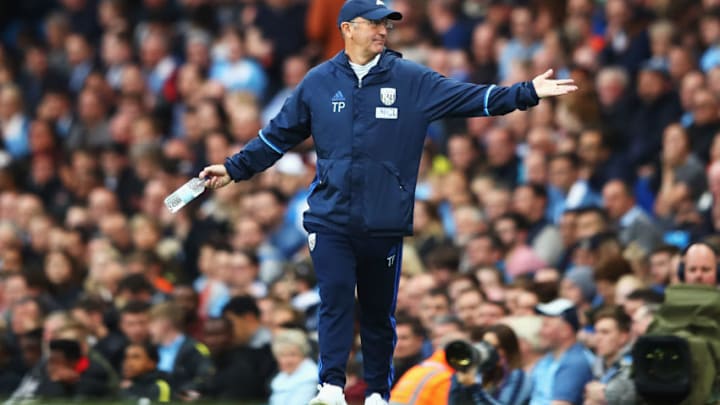West Brom finished 10th in the Premier League in 2016-17, but what grade do they get for their overall performance?
West Brom didn’t have the greatest start to the season, managing only one win in the first month. However, a four-match unbeaten streak followed, and really set the tone for their season: get points against the league’s lesser sides, and lose to the big guns.
The team were, as all Tony Pulis sides are, respectable if not exactly adventurous against the league’s top sides, losing narrowly to Everton, Liverpool, Chelsea and Arsenal. But those matches were never going to determine the Baggies’ fate. They hit the 40-point mark after only 26 matches, a new club record.
West Brom have been a low-scoring team since Pulis took over, but they looked to have opened a new, more attacking chapter for the first half of the season, scoring three or more goals against West Ham, Burnley, Watford, Swansea and Hull.
Despite their lack of interest in maintaining possession — they averaged 41 percent — the Baggies found ways to win games. They were particularly, and predictably, dangerous off set pieces, scoring 20 of their 42 goals from such situations.
The season seriously fizzled out after they hit the 40-point mark — they collected only five points from a possible 36 in their last 12 matches — but this was another solid overall season from West Brom.
The manager
Pulis’ reputation is well known. His teams are solid at the back, dangerous at set pieces and, most importantly, they don’t get relegated. This season was no different. West Brom may not be the most exciting team in the league, but there’s something to be said for the fact they conceded the fewest goals in the division outside the top eight.
The question, as it was when Pulis was at Stoke, is how long West Brom’s ownership and fans will be satisfied with such underwhelming, defensive soccer. There might be reason for optimism in the way the Baggies started the season, while signings like Nacer Chadli and Matt Phillips suggest a greater willingness to attack.
But the team’s drop off after hitting 40 points was alarming, and as sure a sign as any of the limits of Pulis’ approach. West Brom haven’t been a top flight club long enough to take the mid-table for granted, but this squad has enough talent to potentially challenge for a Europa League place. Whether Pulis is the man to lead them there remains to be seen, but this season didn’t offer any particularly convincing evidence.
The players
West Brom made Chadli their club-record signing last summer, and reaped the benefits immediately. Chadli recorded four goals and two assists in his first four matches, before an injury slowed down his season. The Belgian finished with five goals and five assists — not the greatest return, but impressive enough given his team’s focus on defending. He was also, you know, exciting to watch, and could almost certainly contribute more if given the freedom.
Phillips, also a new signing, has impressed as well. He led the team with eight assists and his willingness to drive at defenders with the ball at his feet was a welcome sight in a team that mostly relied on long balls and crosses. He was vital in West Brom’s top 10 finish.
Next: Top 25 players in Champions League history
As well as the new signings did, however, would it really be a Pulis side if several of the best players weren’t defenders? Gareth McAuley was very impressive as the oldest outfield player in the league, while Ben Foster had his best season to date. The Englishmen impressed enough to receive a call up to the national team. He appeared in every match for the Baggies and managed to keep six clean sheets en route to 12 wins.
